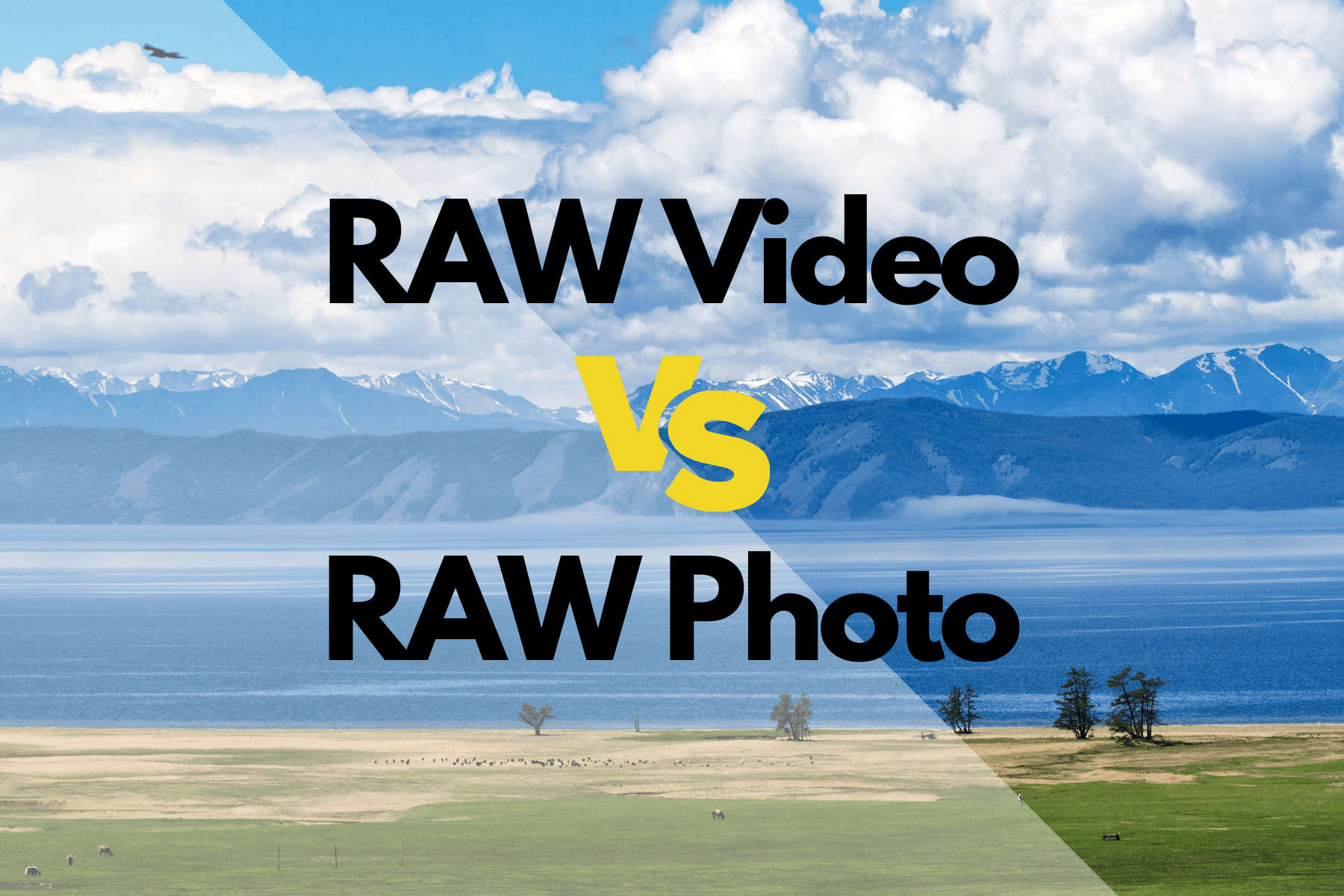RAW is a term that has gained popularity in the field of photography and videography. Raw files contain raw and uncompressed data, allowing professionals greater freedom when editing. Raw is not just used for photography; it can also be used for video footage. This article will discuss the differences between RAW photos and RAW video and provide insights into the benefits and things to remember when working with either format.
Raw files contain raw and uncompressed data, allowing professionals greater freedom when editing.
What is RAW in Photography?
To capture images in a format that preserves all the information recorded by the camera's sensor, photographers use RAW photography. Unlike JPEG, which discards certain data to reduce file size, RAW files save every pixel and color detail. By doing so, photographers can edit factors such as exposure, white balance, and dynamic range with unprecedented control.
Advantages of RAW Photography
- RAW files have a greater dynamic range, allowing photographers to capture details from the brightest and darkest areas of an image. This is especially useful when shooting in situations with a lot of contrast.
- RAW files provide greater color accuracy, enabling photographers to make precise adjustments to hues, saturation, and white balance without sacrificing quality.
- RAW files enable non-destructive editing, meaning that any changes to the image are saved as metadata and do not affect the original data. This allows for endless creative options while ensuring that the image remains unaltered.
- Using RAW files gives photographers better control over sharpening, noise reduction, and other image enhancements, resulting in a final output with better clarity and detail.
What is RAW Video?
RAW video is like RAW photography, capturing unprocessed data straight from the camera's sensor. The footage is balanced, giving filmmakers and videographers more flexibility in post-production to achieve their desired outcome.
Advantages of RAW Video
- RAW video can improve color grading as it preserves maximum color data, resulting in accurate and detailed color grading. This allows filmmakers to push their creativity to the limits by adjusting features such as color temperature, saturation, and overall color grading.
- The RAW video provides an extended dynamic range similar to RAW photos. This increased range allows for superior handling of difficult lighting conditions, resulting in better control over highlights and shadows and reduced occurrence of overexposed or underexposed areas.
- The RAW video provides greater flexibility in exposure correction during post-processing. It enables the recovery of details from overexposed or underexposed areas of the footage, which is beneficial when dealing with challenging or fluctuating lighting conditions.
- RAW video is a great archival format because it captures the scene's most detailed and purest representation. This makes it possible for filmmakers to use their footage again in the future with newer video processing and editing techniques.
Considerations for RAW Video
- Large File Sizes. Due to their larger size compared to compressed formats, RAW video files take up a lot of storage space and may require high-performance hardware for smooth playback and editing.
- Increased Processing Requirements. Working with RAW video files can be computationally intensive because of their size and complexity. You might need more powerful hardware and longer rendering times to process, edit, and render RAW video.
- Workflow Complexity. When you work with RAW video, you'll need to go through some extra steps during post-production. These steps include transcoding, color grading, and converting to distribution formats. Remember that this will complicate the process and may require specialized software and expertise.
In my experience, exploring RAW videos has been exciting and difficult at the same time. The creative control and potential for cinematic results are incredible, but the workflow can be complicated. Working with large RAW files has made me aware of the necessity for enough storage and high-performance hardware. Editing tasks such as transcoding, color grading, and rendering require considerable processing power, which can be challenging for my equipment.
Post-production of RAW video is a complex process that requires careful attention to each step, including organizing footage and conducting color grading. It involves mastering video editing software and attention to detail. The learning curve can be steep, leading to frustration at times.
Closing Thoughts
For my most recent project, a feature-length motion picture, it took the computer nine (yes, 9!) days to convert the raw files into proxy files so we could edit the footage at ⅛ quality. 🤯
For creative professionals, RAW videos and RAW photos are valuable because they provide greater control and flexibility during post-processing. RAW photography specifically offers more dynamic range, color accuracy, and non-destructive editing options to help photographers achieve their desired results.
In contrast, RAW video allows filmmakers to achieve a cinematic look by improving color grading, enhancing dynamic range, and correcting exposure in challenging lighting situations. It is important to consider both formats' file sizes, processing requirements, and workflow complexity. However, the advantages of using RAW and ProRes, such as improved quality, flexibility, and future-proof archiving, are precious in visual storytelling.
RAW videos and photos are changing how we capture and create visual content, whether stunning stills or immersive motion sequences.
Related article: White Balance Photography: What is White Balance?
Related article: How to Use Color Theory to Create Visually Pleasing Images?
Related article: How to Shoot HDR (High Dynamic Range) Images?
Related article: Beginner’s Guide to High Contrast Photography
Related article: 8 Tips for Better Visual Storytelling












